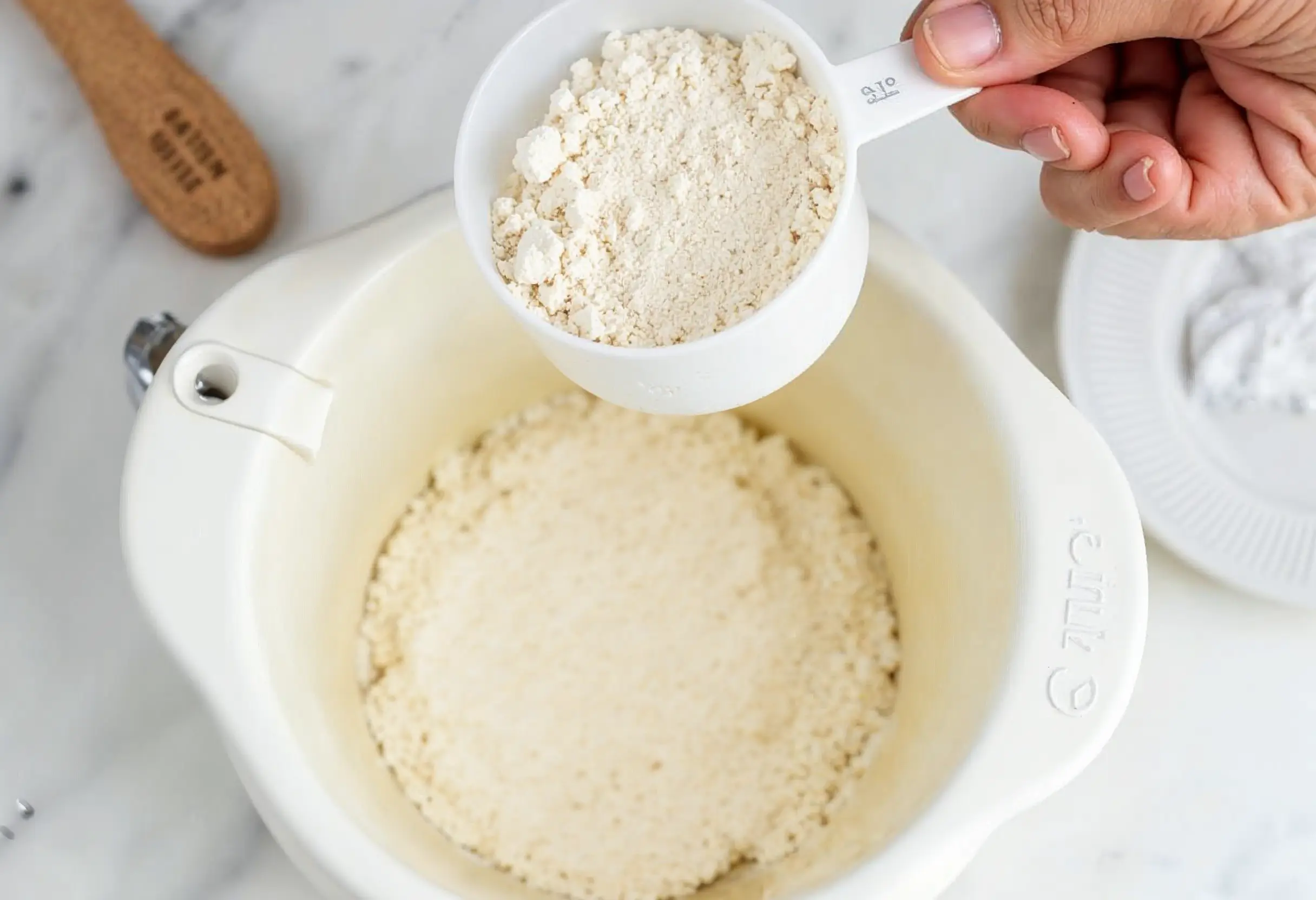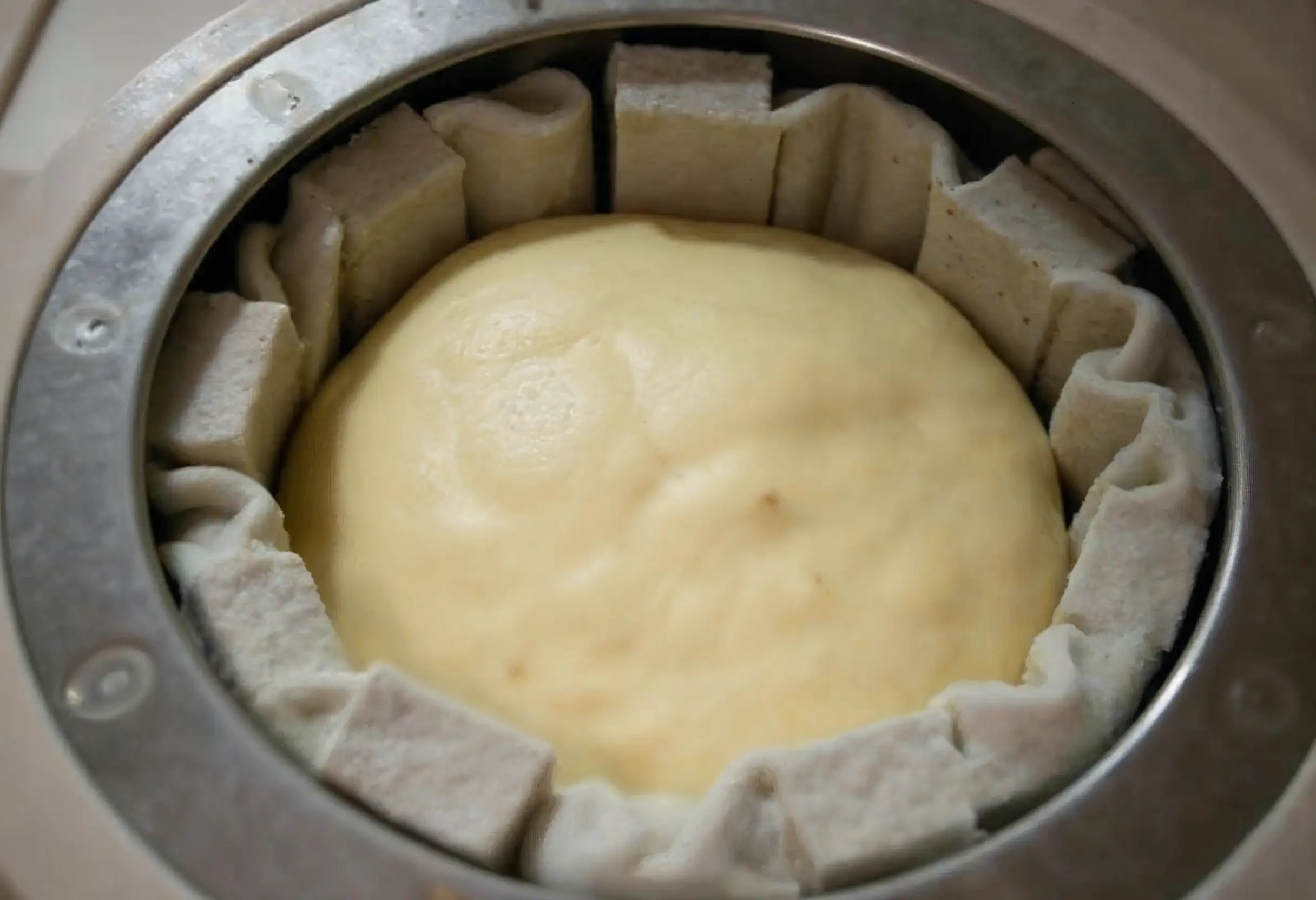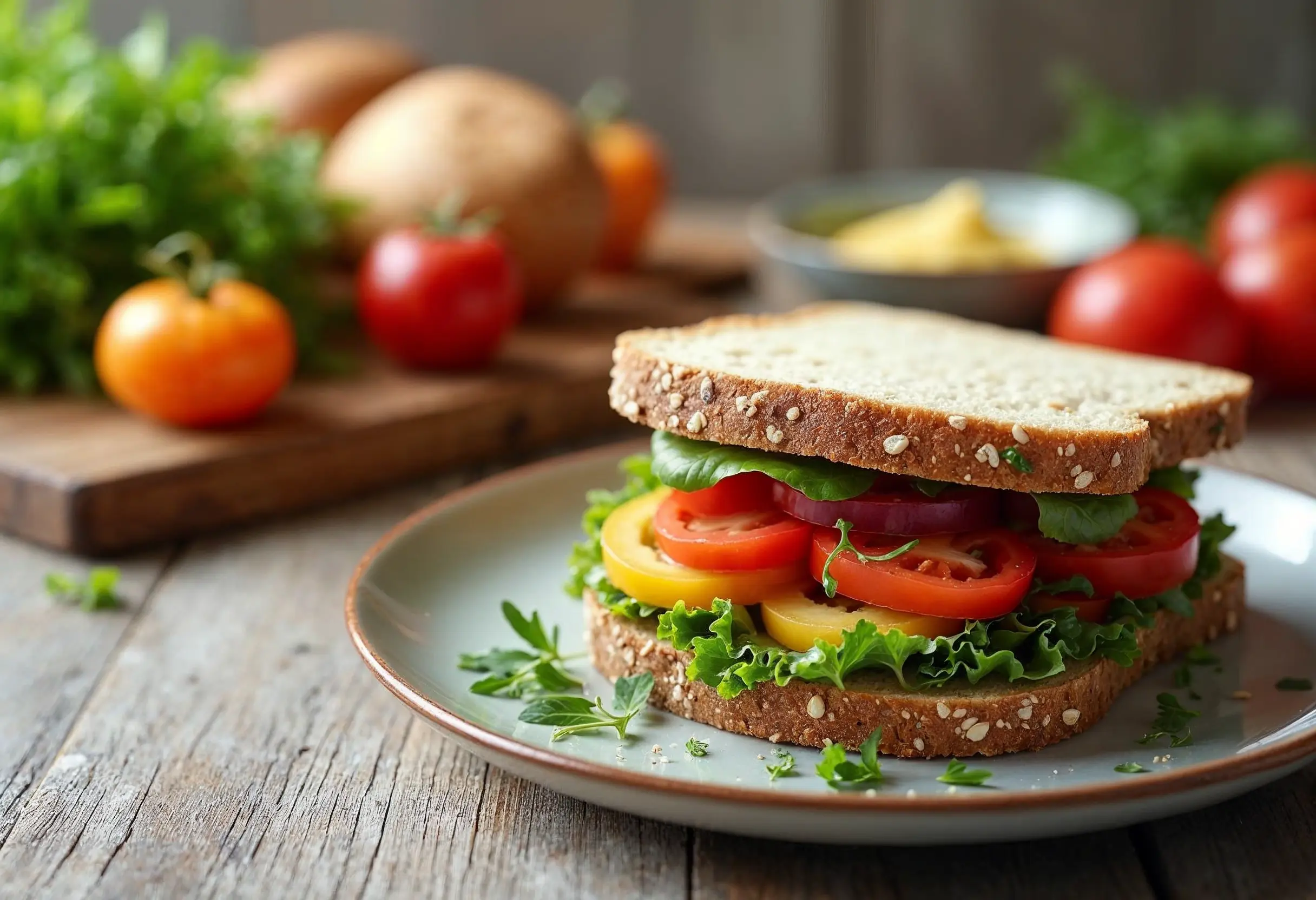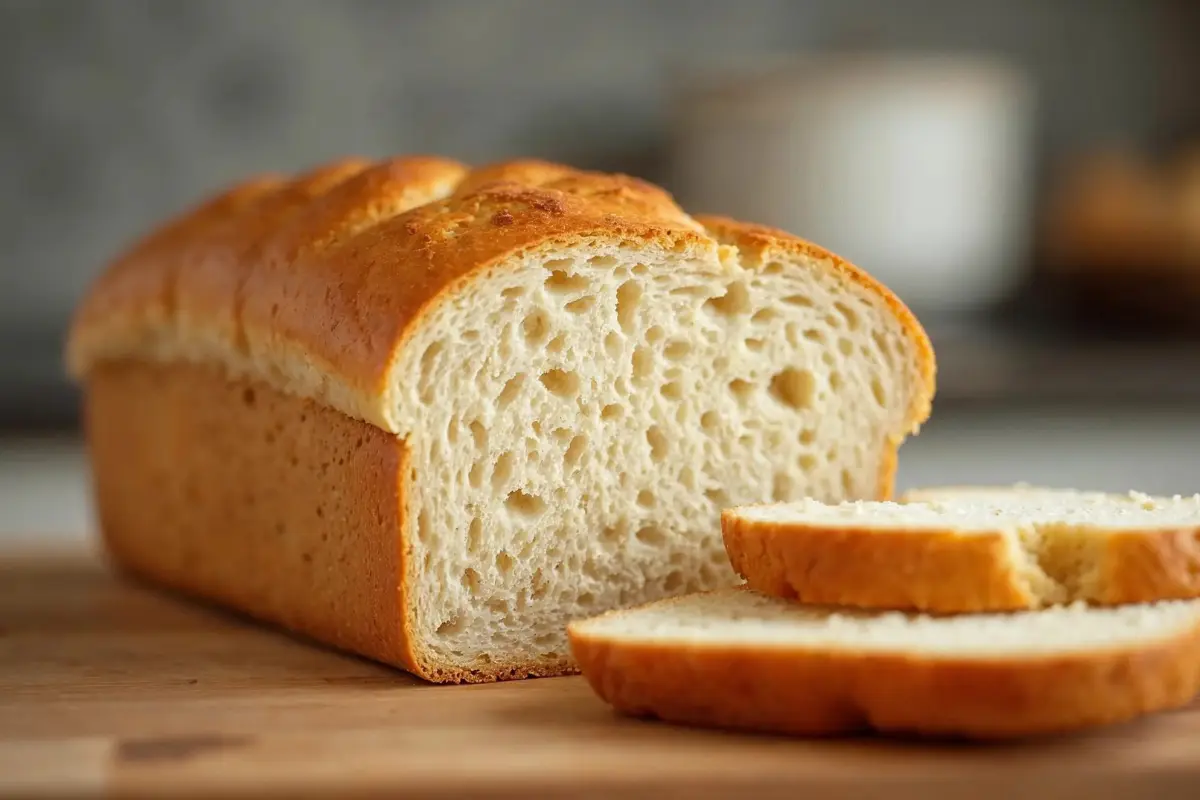The Best Wholemeal Bread Machine Recipe: Soft, Healthy & Easy
Introduction
Nothing beats the aroma of freshly baked bread wafting through your kitchen. For those who value health and taste, wholemeal bread is nutritious and delicious. Thanks to bread machines, creating a perfect loaf of wholemeal bread at home is easier than ever. This guide will walk you through an easy wholemeal bread machine recipe, covering everything from selecting the right flour to troubleshooting common issues.
We’ll also explore the benefits of wholemeal bread, answer frequently asked questions like why wholemeal bread can be dense, and share expert tips to ensure your loaf turns out perfect every time. Whether you’re a seasoned baker or new to bread machines, this recipe is for you. Let’s get started!
Understanding Wholemeal Bread
What is Wholemeal Bread?
Wholemeal bread, often called whole wheat bread in the United States, is a type of bread made from flour that includes the entire grain of wheat. Unlike white bread, where the bran and germ are removed during processing, wholemeal bread retains these parts, making it more nutritious and fiber-rich. It is an excellent source of vitamins, minerals, and dietary fiber, which can improve digestion and support overall health.
Wholemeal vs. Whole Wheat: Are They the Same?
Many people use “wholemeal” and “whole wheat” interchangeably, but there are subtle differences depending on where you are.
- In the US: “Whole wheat” is the commonly used term for bread made from 100% whole-grain wheat.
- In the UK and other regions: The term “wholemeal” is preferred, though it also signifies that the flour contains the whole grain.
Both terms refer to bread that uses minimally processed flour, retaining the nutrients from the wheat germ and bran. Choosing wholemeal bread means opting for a healthier alternative to refined bread.
Why Choose Wholemeal Bread?
Wholemeal bread is celebrated for its health benefits, such as:
- Rich in Fiber: Helps maintain gut health and regulates digestion.
- Low Glycemic Index: Slows sugar absorption, making it suitable for diabetics.
- Packed with Nutrients: Offers magnesium, iron, and B vitamins, essential for energy and overall health.
Incorporating wholemeal bread into your diet is an easy way to enjoy a more balanced and nutritious meal.
Ingredients for the Perfect Wholemeal Bread

Choosing the Right Wholemeal Flour
The foundation of any good wholemeal bread is high-quality flour. Not all wholemeal flours are created equal, so selecting the right one for your bread machine is essential.
- Stone-ground wholemeal Flour: This retains more nutrients and has a coarser texture, perfect for rustic loaves.
- Organic Wholemeal Flour: Free from pesticides and additives, offering a pure and natural flavor.
- High-Protein Wholemeal Flour: Ideal for achieving a soft and well-risen loaf, as it contains the gluten necessary for structure.
When shopping for wholemeal flour, look for brands that mention compatibility with bread machines. This ensures the flour has the right balance of coarseness and protein content.
Essential Ingredients for Wholemeal Bread
Creating the perfect wholemeal bread starts with just a few simple ingredients. Here’s what you’ll need:
- Wholemeal Flour (3 cups): The star ingredient, providing fiber and nutrients.
- Yeast (2 teaspoons): Use active dry or bread machine yeast for a reliable rise.
- Warm Water (1 1/4 cups): Activates the yeast and hydrates the dough.
- Salt (1 1/2 teaspoons): Enhances flavor and balances sweetness.
- Sugar or Honey (2 tablespoons): Feeds the yeast and adds a touch of sweetness.
- Olive Oil or Butter (2 tablespoons): Contributes to a soft texture and moist crumb.
Optional Add-ins for Flavor and Texture
To elevate your bread, consider these optional ingredients:
- Seeds: Add sunflower, chia, or flaxseeds for a crunchy texture and added nutrition.
- Nuts: Walnuts or almonds pair well with the earthy taste of wholemeal.
- Sweeteners: Use molasses or agave for a unique flavor twist.
By selecting high-quality ingredients and experimenting with add-ins, you can customize your loaf to suit your taste preferences.
Setting Up Your Wholemeal Bread Machine Recipe for Success
Understanding the Whole Wheat Setting
Bread machines are equipped with various settings, and for wholemeal bread, the whole wheat setting is your best friend. This setting is specifically designed for dense flours like wholemeal, allowing more time for kneading and rising.
- Why Use the Whole Wheat Setting?
Wholemeal flour absorbs water slower than refined flour, and the bran can interfere with gluten development. The whole wheat setting compensates for this by extending the kneading and proofing times, resulting in better texture and rise. - When Should You Use It?
Always use the whole wheat setting when baking bread with 50% or more wholemeal flour. For recipes with a blend of wholemeal and white flour, you can experiment with standard settings, but the whole wheat option usually yields better results.
Preparing Your Bread Machine
Proper preparation ensures a seamless bread-making experience:
- Check Your Pan and Paddle:
- Ensure they are clean and correctly inserted into the bread machine.
- Layer Ingredients in the Correct Order:
- Add liquids first (e.g., water, oil), followed by dry ingredients like flour. Place yeast on top, ensuring it doesn’t touch the salt prematurely.
- Use Room Temperature Ingredients:
- Cold ingredients can delay yeast activation, while overly warm ones may kill the yeast.
- Measure Ingredients Accurately:
- Use measuring cups and spoons for precision, especially for water and flour. A kitchen scale is ideal for perfect ratios.
Tips for Preventing Dense Bread
One of the most common issues with wholemeal bread is its tendency to turn out dense. Here’s how to avoid it:
- Hydration is Key:
Wholemeal flour absorbs more water. If your dough feels dry, add a tablespoon of water at a time during the kneading phase. - Don’t Skimp on Kneading:
The gluten in wholemeal flour needs extra time to develop. If your machine has an adjustable kneading cycle, extend it by 5–10 minutes. - Add Vital Wheat Gluten:
This optional ingredient improves elasticity and structure, helping your bread rise higher. Use about 1 tablespoon per cup of flour.
By understanding your bread machine’s settings and tweaking your process, you’ll be well on your way to baking soft, fluffy wholemeal bread every time!
Step-by-Step Wholemeal Bread Machine Recipe

Preparation Steps
Before starting, gather all your ingredients and ensure your bread machine is ready for action. Follow these steps for smooth preparation:
- Check Your Machine:
- Make sure the bread pan and paddle are clean and securely placed inside the machine.
- Prepare Your Ingredients:
- Measure all ingredients accurately using measuring cups or a kitchen scale. Room-temperature ingredients work best for even mixing.
- Layer Ingredients Properly:
- Add the ingredients in this order: liquids first (water, oil), dry ingredients (flour, salt, sugar), and yeast last. Make a small well in the flour to hold the yeast, keeping it separate from the salt until mixing begins.
Recipe Instructions
Ingredients:
- 3 cups wholemeal flour
- 1 1/4 cups warm water
- 2 tablespoons olive oil or melted butter
- 2 tablespoons sugar or honey
- 1 1/2 teaspoons salt
- 2 teaspoons bread machine yeast
- Optional: 2 tablespoons seeds or nuts for added texture
Directions:
- Step 1: Add Ingredients to the Bread Pan
- Begin with the water and olive oil.
- Add the wholemeal flour evenly across the pan. Sprinkle salt and sugar over the flour.
- Step 2: Add Yeast
- Make a small indentation in the flour using the back of a spoon and place the yeast in the well.
- Step 3: Select the Whole Wheat Setting
- Choose the whole wheat or wholemeal setting on your bread machine. Select the crust color (light, medium, or dark) based on your preference.
- Step 4: Start the Bread Machine
- Press start and allow the bread machine to work its magic.
- During the initial kneading phase, check the dough’s consistency. If it appears too dry, add water a tablespoon at a time. If it’s too sticky, add flour in small increments.
- Step 5: Allow the Bread to Bake
- Once the baking cycle completes, let the bread sit in the pan for about 10 minutes. Then, transfer it to a wire rack to cool completely before slicing.
Tips for Perfect Results
- Test Your Yeast: Ensure your yeast is fresh and active by proofing it with a small amount of warm water and sugar before adding it to the bread machine.
- Experiment with Add-ins: Try adding seeds, dried fruit, or herbs to create unique flavor profiles.
- Cool Before Slicing: Cutting the bread too soon can make it gummy. Let it cool for at least 30 minutes.
Enjoy your freshly baked, wholesome, and nutritious wholemeal bread straight from your bread machine!
Troubleshooting Common Issues
Even with a foolproof recipe, baking wholemeal bread in a bread machine can sometimes lead to unexpected results. Here’s how to troubleshoot the most common issues to ensure your bread turns out perfect every time.
Why Is My Bread So Dense?
A dense loaf is one of the most frequent challenges when baking wholemeal bread. Here’s what might be going wrong:
- Insufficient Kneading
- Wholemeal flour contains bran, which interferes with gluten formation. If the dough isn’t kneaded enough, it can result in a dense loaf.
- Solution: Ensure your bread machine’s kneading cycle is long enough. Add 5–10 extra minutes if possible.
- Too Much or Too Little Liquid
- The dough should be soft and slightly sticky. Too much water creates a heavy loaf, while too little prevents proper hydration.
- Solution: Adjust the water content during the kneading phase, adding or reducing a tablespoon at a time.
- Old or Inactive Yeast
- Yeast that is past its prime won’t give your bread the rise it needs.
- Solution: Always use fresh, active dry yeast and store it in a cool, dry place.
Why Doesn’t My Bread Rise Properly?
- Incorrect Measurements
- Baking is a science, and small errors in measurements can throw off the entire process.
- Solution: Use a kitchen scale for precise measurements.
- Salt Contacting Yeast
- Salt can kill yeast if it comes into direct contact during preparation.
- Solution: Layer ingredients carefully, ensuring the yeast doesn’t touch salt until mixing begins.
Other Common Problems
- Uneven Crust:
- Check your bread machine’s temperature settings. Too high or low can lead to uneven baking.
- Overly Thick Crust:
- Use the “light crust” option to avoid excessive browning.
With these troubleshooting tips, you’ll be well-prepared to tackle any challenges and consistently produce soft, fluffy wholemeal bread!
Wholemeal Bread for Specific Diets
Wholemeal Bread is a versatile option that can be adapted for a variety of dietary needs. Whether you’re managing diabetes, following a low-sodium diet, or avoiding gluten, there’s a way to make this wholesome bread work for you.
Is Wholemeal Bread Good for Diabetics?
Wholemeal bread can be an excellent choice for people with diabetes due to its low glycemic index (GI). Unlike white bread, which can cause a spike in blood sugar levels, wholemeal bread releases energy slowly, helping to maintain stable blood sugar.
Tips for Making Diabetic-Friendly Wholemeal Bread:
- Use Wholemeal Flour with Seeds: Seeds like chia and flax add fiber, further reducing the GI.
- Replace Sugar with Natural Sweeteners: Use stevia or avoid sweeteners altogether to minimize sugar content.
- Portion Control: Slice your bread thinly to manage carbohydrate intake effectively.
Low-Sodium Wholemeal Bread
For those on a low-sodium diet, reducing salt in your bread is simple and doesn’t compromise flavor.
How to Reduce Sodium:
- Cut Salt by Half: Most bread recipes use 1–2 teaspoons of salt; reducing this amount by half can still yield great results.
- Enhance Flavor Naturally: Add herbs like rosemary, thyme, or garlic powder to make up for the reduced saltiness.
Gluten-Free Alternatives
While traditional wholemeal bread contains gluten, you can modify the recipe to suit gluten-free diets.
Gluten-Free Adjustments:
- Use Gluten-Free Wholemeal Flour: Almond, oat, or buckwheat flour can replace wheat flour.
- Add Xanthan Gum or Psyllium Husk: These binders help create the elasticity needed for proper structure.
- Check Bread Machine Compatibility: Ensure your machine has a gluten-free setting for optimal results.
Adapting wholemeal bread for specific dietary needs is easy with a few thoughtful adjustments. Whether you’re managing blood sugar, reducing salt, or avoiding gluten, you can enjoy the benefits of homemade wholemeal bread tailored to your preferences!
Wholemeal Bread Storage Tips
Proper storage is essential to keep your wholemeal bread fresh and flavorful for as long as possible. Here’s how to store it and what to avoid.
How to Store Bread for Maximum Freshness
- Room Temperature (Short Term):
- Place the loaf in a bread bag or wrap it in a clean kitchen towel. Store it in a cool, dry place for up to 3 days.
- Pros: Convenient and maintains crust texture.
- Cons: Bread can dry out faster compared to sealed storage.
- Place the loaf in a bread bag or wrap it in a clean kitchen towel. Store it in a cool, dry place for up to 3 days.
- Refrigeration (Medium Term):
- Wrap the bread in plastic wrap or foil before refrigerating. It stays fresh for about 5–7 days.
- Pros: Slows mold growth, extending shelf life.
- Cons: Can make bread dry and tough due to moisture loss.
- Wrap the bread in plastic wrap or foil before refrigerating. It stays fresh for about 5–7 days.
- Freezing (Long Term):
- Slice the bread, place it in an airtight bag, and freeze for up to 3 months. Thaw slices at room temperature or toast them directly.
- Pros: Retains flavor and texture for months.
- Cons: Requires defrosting, and freezer burn can occur without proper sealing.
- Slice the bread, place it in an airtight bag, and freeze for up to 3 months. Thaw slices at room temperature or toast them directly.
Signs of Spoilage
- Look for mold, an unpleasant odor, or an overly hard texture. Avoid consuming bread that shows any signs of spoilage.
By storing your wholemeal bread properly, you’ll enjoy its wholesome taste and texture for days or even weeks!
Creative Ways to Enjoy Wholemeal Bread

Wholemeal bread isn’t just for sandwiches—it’s a versatile base for many delicious dishes. From breakfast to dinner and even dessert, there are countless ways to enjoy this nutritious staple.
Classic Pairings
- With Butter and Jam:
- A timeless favorite spread a generous layer of butter and your favorite jam or marmalade for a comforting snack.
- Avocado Toast:
- Mash ripe avocado with a sprinkle of salt, pepper, and chili flakes. Add toppings like poached eggs or cherry tomatoes for a trendy and nutritious meal.
- Soup Companion:
- Serve toasted slices with hearty soups like tomato, lentil, or chicken noodle for a satisfying combo.
Delicious Sandwich Ideas
- Grilled Cheese:
- Layer sharp cheddar and mozzarella between two slices and toast until golden brown.
- Turkey and Veggie Club:
- Combine roasted turkey, lettuce, tomato, and a dollop of mustard or mayo for a filling lunch.
Using Leftover Bread
Don’t let leftover bread go to waste—turn it into something amazing!
- Croutons:
- Cube the bread, toss with olive oil and herbs and bake until crispy. Perfect for salads and soups.
- Breadcrumbs:
- Blitz stale bread in a food processor and store it for use in meatballs, breading, or casseroles.
- French Toast:
- Soak slices in a mixture of beaten eggs, milk, cinnamon, and vanilla, then fry until golden for a delightful breakfast treat.
Get Creative!
- Wholemeal Bread Pizza:
- Use slices as a base for quick, mini pizzas. Top with tomato sauce, cheese, and your favorite toppings, then bake until melted and bubbly.
- Sweet Bread Pudding:
- Combine chunks of wholemeal bread with a mixture of eggs, milk, sugar, and cinnamon. Bake until set for a comforting dessert.
With so many ways to enjoy it, wholemeal bread can be a delicious addition to every meal!
FAQs: Answering Your Top Questions
When it comes to baking and enjoying wholemeal bread, several questions often arise. Let’s tackle the most frequently asked ones to make your bread-making experience seamless and enjoyable.
Is Wholemeal the Same as Whole Wheat?
Wholemeal and whole wheat are similar but vary in terminology based on region:
In the US, “whole wheat” is used to describe bread made with 100% whole-grain wheat.
In the UK and other countries, “wholemeal” refers to the same type of bread.
Both terms emphasize using minimally processed flour with the bran, germ, and endosperm intact for maximum nutrition.
Why Is My Wholemeal Bread So Dense in My Bread Machine?
Wholemeal bread tends to be denser due to the presence of bran, which hinders gluten formation. Common reasons for density include:
Insufficient kneading: The gluten network may not develop fully.
Incorrect hydration: Wholemeal flour absorbs more water; adjusting the water content can help.
Inactive yeast: Ensure your yeast is fresh and active.
What Is the Best Wholemeal Flour for a Bread Maker?
The best wholemeal flour for bread machines should be high in protein (around 12–14%) to support gluten development. Stone-ground or organic wholemeal flour often delivers superior flavor and texture.
When to Use the Whole Wheat Setting on a Bread Machine?
Always use the whole wheat setting when your recipe contains 50% or more wholemeal flour. This setting provides extended kneading and proofing times to accommodate the unique needs of wholemeal dough.
Conclusion and Final Thoughts
Baking wholemeal bread in a bread machine is a rewarding experience that combines health and convenience. With its rich flavor, high nutritional value, and versatility, wholemeal bread is a staple that complements any meal. By selecting quality ingredients, mastering your bread machine’s settings, and following expert tips, you can consistently achieve soft, fluffy, and perfectly baked loaves.
This guide has walked you through every aspect of making wholemeal bread—from choosing the best flour to troubleshooting common issues. We’ve also explored creative ways to enjoy your bread and answered frequently asked questions to ensure you feel confident throughout the process.
Whether you’re baking for yourself, your family, or loved ones, homemade wholemeal bread is a delicious and wholesome choice. Try out this recipe today, experiment with add-ins like seeds or nuts, and customize it to suit your taste and dietary needs. There’s no limit to the joy of fresh, warm bread baked right in your kitchen.
Don’t wait—give this wholemeal bread machine recipe a try and experience the satisfaction of homemade goodness!

